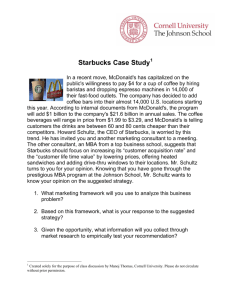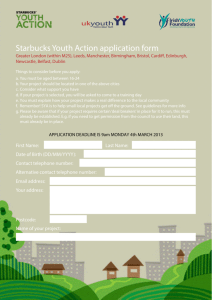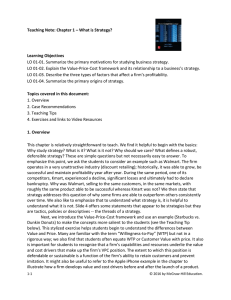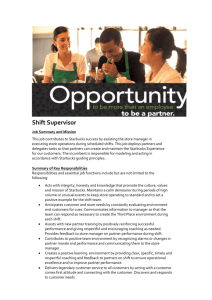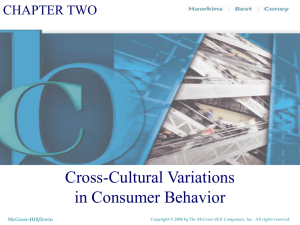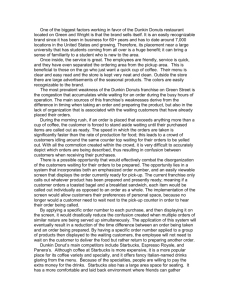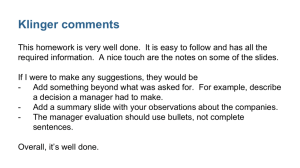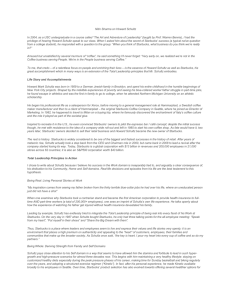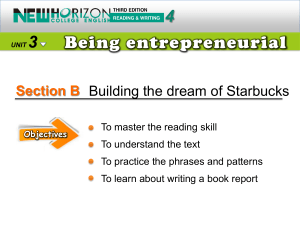Starbucks* International Operations
advertisement
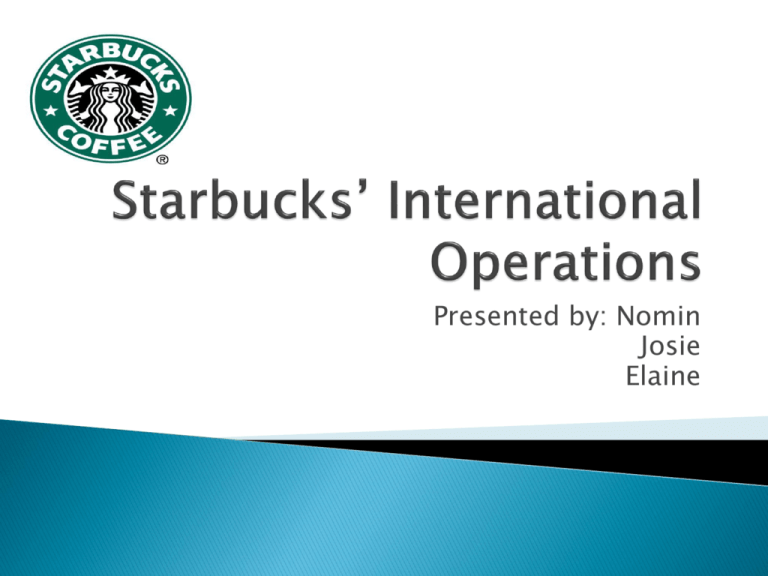
Presented by: Nomin Josie Elaine Summary –Elaine Question 1-Elaine Competitor Analysis-Nomin Question 2-Nomin Question 3- Josie Conclusion-Josie A new concept in 1987 by Schultz. The reasons of Starbucks’ success. Mode of entry into international markets. Problems in international operations. Six ways to enter a foreign market: Exporting, Turnkey Projects, Licensing, Franchising, Joint Ventures, and Wholly Owned Subsidiaries. Starbucks’s Three-Pronged Strategy The Advantages of Starbucks’ Strategy Three Main Competitors: ◦ Nestle. McDonalds Dunkin Donuts. Nestle is famous for instant coffee. McDonalds is the largest fast-food enterprise Dunkin Donuts is an international donut and coffee retailer. Starbucks faced with problems because of “No Smoking” rules In Europe, Starbucks faced stiff competition with local retailers. Starbucks offered a segregated section for ladies A young generation would attracted to Starbucks. In Asia, Starbucks offered curry puffs and meat buns. Joint venture is a acceptable to Starbucks. Political Risk -Howard Schultz, alleged closeness to the Jewish Community Arab countries’ boycott of American goods. In Europe: ◦ -Uncertified Coffee Beans ◦ -Unqualified Trained Workforce ◦ -Unsuitable Real State (Locations) ◦ -Unreached Joint Ventures& Licensing Agreement Stiff Competition from Local Players: ◦ In England, Overprice ◦ In Germany, Competitors “Stole” it’s Strategies ◦ In France, “Traditional Strong French Coffee, and “No Smoking” Principle Japan, the largest overseas market Young people lose their interests Rapid Expansion: Store eats Store Short-Term -Cost Cutting Policy -Close Loss-Making Stores -Strengthen Local Specialty Long-Term Rethink its entry strategy Focus on pricing Caution volatile political risk and complex business environment

